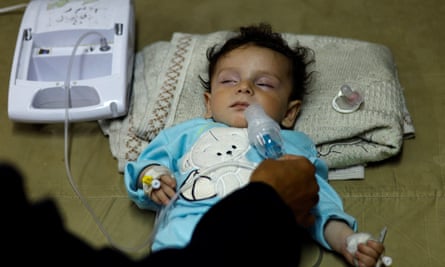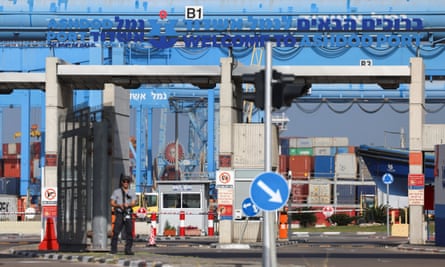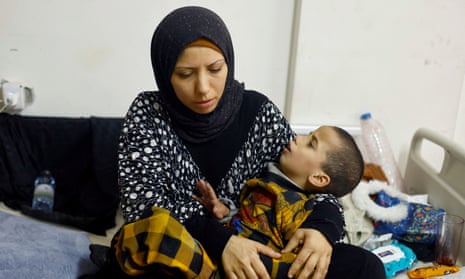Every morning, starving mothers arrive at the doors of al-Awda hospital in northern Gaza desperately seeking baby formula. Many mothers of newborns are unable to breastfeed, the head of the hospital said, because they are so underfed.
Inside the hospital, where doctors are undergoing treatment for malnutrition alongside their patients, surgeons say they are carrying out increasing numbers of amputations owing to the effects of acute hunger.
“Everyone here has lost more than a quarter of their body weight due to malnutrition. There is no food,” said Mohammed Salha, al-Awda’s acting director.
Salha, an orthopaedic surgeon, is receiving treatment from the hospital he runs including drugs and vitamins to treat conditions stemming from acute hunger. “I can already tell that I’ve grown weaker,” he said.
“We’re seeing a rise in infections among the injured and after surgeries,” he added. “These people need good nutrition to help them heal.” Salha said poor nutrition meant more infections, including gangrene, which in turn meant more amputations.
For months, aid groups have struggled to get food to an estimated 300,000 people in northern Gaza, where the world’s global authority on food security recently predicted a famine was either already happening or would begin before July.
The crisis worsened last week when the food charity World Central Kitchen, the only organisation outside the UN regularly providing hot meals, suspended operations after Israeli strikes killed seven staff members.

“WCK was feeding around 500,000 people each day with hot meals,” said Abeer Etefa, a spokesperson for the UN’s World Food Programme in Cairo. “We are feeding over a million people each month, and Unrwa [the UN’s agency for Palestinian refugees] is providing food to people monthly. Between the three of us, we are really trying to push back this famine.
“But this will only work if humanitarian aid workers are operating in a safe environment – there has to be respect for their protection, because of the urgent need to access the most vulnerable throughout the Gaza Strip.”
On Friday, after a phone call between the US president, Joe Biden, and the Israeli prime minister, Benjamin Netanyahu, Israeli authorities announced they would temporarily reopen the Erez crossing into northern Gaza and allow more aid to enter via the port of Ashdod to the north of the territory.
For more aid to reach people in northern Gaza, the Israeli officials in charge of entry points to the strip will need to change their approach to humanitarian convoys, which aid groups say are subjected to an unpredictable and chaotic approval regime.
This is particularly true for northern Gaza, where Unrwa, the largest aid organisation operating in Gaza, has been blocked by Israel from delivering aid.
“We call on the Israeli authorities to reverse their decision that bans Unrwa from reaching northern Gaza with food supplies,” said the organisation’s director of communications, Juliette Touma. “The clock is ticking fast towards famine and Unwra must be allowed to do its work.”
Etefa said the WFP had resumed delivering to northern Gaza last month after it was forced to suspend deliveries because of security issues in February.
“After many failed attempts, we managed to send a number of convoys to the north during March – we sent around 47 trucks,” Etefa said. “Since the beginning of January around 110 trucks managed to reach the north, but that’s nowhere near enough. We need 30 trucks going in every day.
“It’s hit and miss, sometimes there are clearance issues, sometimes there are safety and security problems, and sometimes we are turned away from checkpoints or left there for hours, and desperate people come and help themselves to what’s on the truck.”
after newsletter promotion
In a report published last week, the aid group Oxfam said people in northern Gaza were surviving on an average of 245 calories each day – less than a can of beans.
Scott Paul, the head of US government advocacy for Oxfam, said simply flooding the area with food was unlikely to solve the hunger crisis.

Photograph: Hannah McKay/Reuters
“In the north we are talking about a famine situation where putting food on someone’s doorstep, or dropping it from the sky or offloading from a pier could be dangerous. It’s not just minimally helpful, it could be dangerous to severely acutely malnourished people,” he said.
“The kind of humanitarian assistance needed to bring people back from a famine … [would involve] flooding the zone with people and medicine, and medical supplies. And that requires a kind of operating environment that we are nowhere close to having right now.”
People trapped in northern Gaza are living through “hell on earth”, said one doctor, Umaiyeh Khammash, who heads the health organisation Juzoor. Khammash spoke to the Guardian through Juzoor’s partner organisation Care International.
“We have tried many times to get food supplies through; one time we were able to get a truck of food but it was hit and 20 people died. Food, in particular, has been a major problem in the north,” he said.
He said doctors working with him in the north were observing wasting in children, a sign of acute hunger. “Their bones are becoming visible and they are very thin. Many are also suffering from dehydration, diarrhoea and infection.”
Salha described eating plants intended as animal feed, and said local people were grinding dry animal feed to make bread as there was little to no flour.
“I saw people when the airdrops arrive – people fight,” he added. “They die trying to get food for themselves and their children.”
